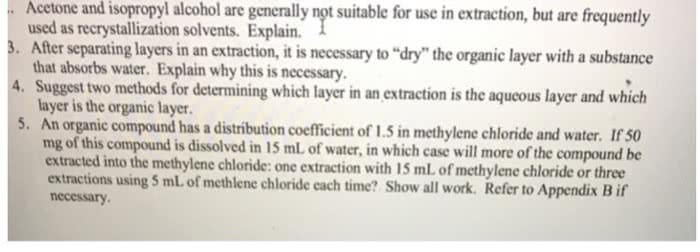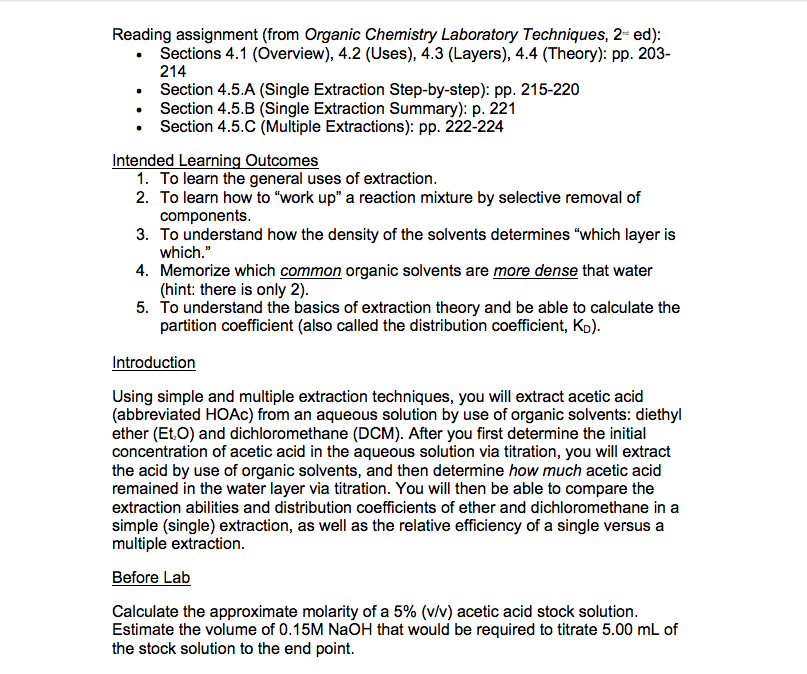CHE 211 Study Guide - Midterm Guide: Miscibility, Organic Compound, Solvent

Organic Chemistry 2 – Chemical Purification & Separation
Extraction Calculations
θ K = C1/C2
θ C1 = g of compound per mL organic solvent
θ C2 = g of compound per mL water
θ Where K is defined as the distribution coefficient
θ If K > 1.5 for an organic substance, it can be extracted from water using an water
insoluble organic solvent
• When an organic compound distributes itself among 2 immiscible liquids, the
ratio of solute concentration in the organic layer (known as C1) to its
concentration in water [aqueous layer] (known as C2) this ratio is equal to
the solubilities of the 2 immiscible solvents
• Any organic compound that has the distribution coefficient greater than 1.5 --> it
means that it CAN be extracted from an aqueous layer using a water insoluble
organic solvent
• It is best (more efficient) to do several extractions with small volumes of
organic solvent than one large extraction with one large organic solvent
Calculations
You have a 50 mL solution of benzoic acid in water that contains approximately 1.00g of the
acid. The distribution coefficient of benzoic acid in diethyl ether and water is around 5.
Calculate the amount of acid that would be left in the water solution after three 15-mL
extractions with ether.
Do the same calculation using one 45-mL extraction with ether to determine which method is
more efficient
o This equation is used to figure out how
many grams of acid remains in the aqueous
layer when we extract it with 15 mL of ether
o Plug these into the equation and solve for
x
o 1.00 - X this will tell us how much benzoic
acid moved from the aqueous layer into the
organic layer
o 15 ml This is the amount of the second
liquid (ether) that is being used to extract the 50 mL solution of benzoic acid
o C2 this represents the final concentration of benzoic acid in water and "X" represents
how much of the acid is left in the aqueous layer after the first extraction
o
find more resources at oneclass.com
find more resources at oneclass.com
Document Summary
Organic chemistry 2 chemical purification & separation. C1 = g of compound per ml organic solvent. C2 = g of compound per ml water. Where k is defined as the distribution coefficient. It is best (more efficient) to do several extractions with small volumes of organic solvent than one large extraction with one large organic solvent. You have a 50 ml solution of benzoic acid in water that contains approximately 1. 00g of the acid. The distribution coefficient of benzoic acid in diethyl ether and water is around 5. Calculate the amount of acid that would be left in the water solution after three 15-ml extractions with ether. 2 extractions with 15 ml of diethyl ether. This is the new value for the third extraction with 15 ml of diethyl ether for c1. After the 3rd extraction, only 0. 064g of benzoic acid remains in the aqueous layer and.


